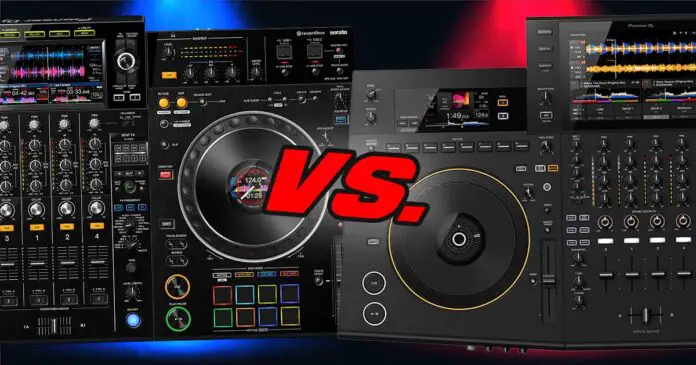After a long break, I’m back with another gear comparison, and this time it’s the recently released OPUS QUAD being put to the test against the now pretty dated Pioneer XDJ-XZ. If you’re eager to know whether or not the old XDJ-XZ has something more to offer than the new piece of hardware from Pioneer DJ, read on. There are some important things to be said here!
Check out also: Pioneer DJ OPUS-QUAD Review – An Honest Take
This web portal is reader-supported, and is a part of the Amazon Services LLC Associates Program and the eBay Partner Network. When you buy using links on our site, we may earn an affiliate commission!
Quick Comparison
| Controller | Features | Price |
|---|---|---|
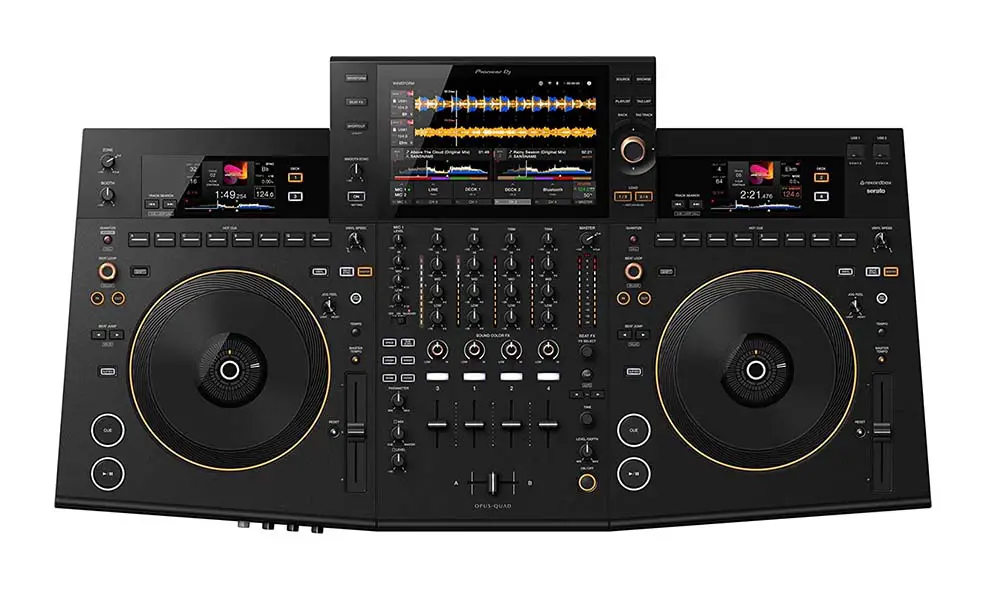 | Pioneer DJ OPUS QUAD: – Updated layout design. – Huge 10-inch touch screen upgrade. – Zone output feature on board. | Check price on Amazon Check price on Ebay Check price on Guitar Center |
 | Pioneer XDJ-XZ: – Classic club setup layout with more physical controls. – Pro DJ Link compatibility. – Color jog wheel displays. | Check price on Amazon Check price on Ebay Check price on Guitar Center |
2 vs. 4 Decks Standalone Mixing
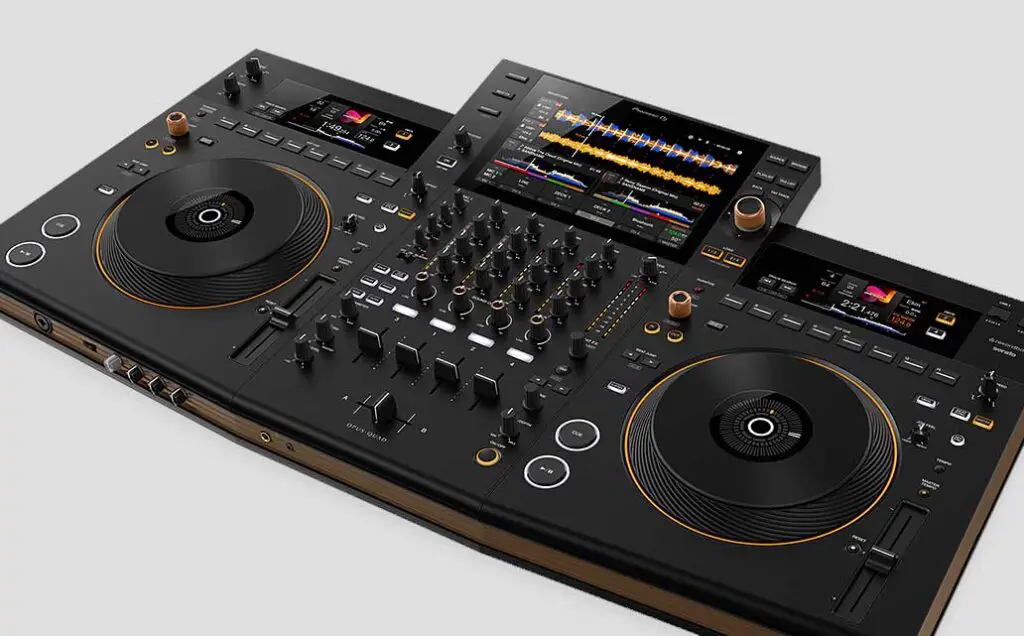
Keep in mind, that the Pioneer XDJ-XZ, as I did mention quite a few times in my other DJ controller comparisons, while having 4 physical mixer channels, does not support full 4-channel standalone mixing without using 3rd party players via the Pro DJ Link connection.
When working in the standalone mode, the XDJ-XZ will let you access just 2 of its mixer channels for track loading, and you’ll be able to use the remaining two decks only while using the Pro DJ Link feature (with 2 external compatible CDJ players connected to the controller). In wired mode (when connected to your PC), all 4 mixer channels can be used for mixing using your chosen DJ software.
The Pioneer DJ OPUS QUAD, on the other hand does let you use all 4 of its mixer channels when in standalone mode without any restrictions. In turn however, it doesn’t have support for the Pro DJ Link standard (more on that in a short while).
The conclusion is pretty straightforward here. If you need a 4 channel standalone DJ controller and you’re choosing between these two – go with the OPUS QUAD.
Huge Touch Display Upgrade

The OPUS QUAD is equipped with a large 10.1-inch touch screen, which is a substantial upgrade from the small and rather outdated when it comes to the technology used, 7-inch display of the Pioneer XDJ-XZ.
The display of the OPUS QUAD lets you utilize instant track previews like on the CDJ-3000’s, access the X-pad for additional FX control, access system settings, access and manage your music library and much more.
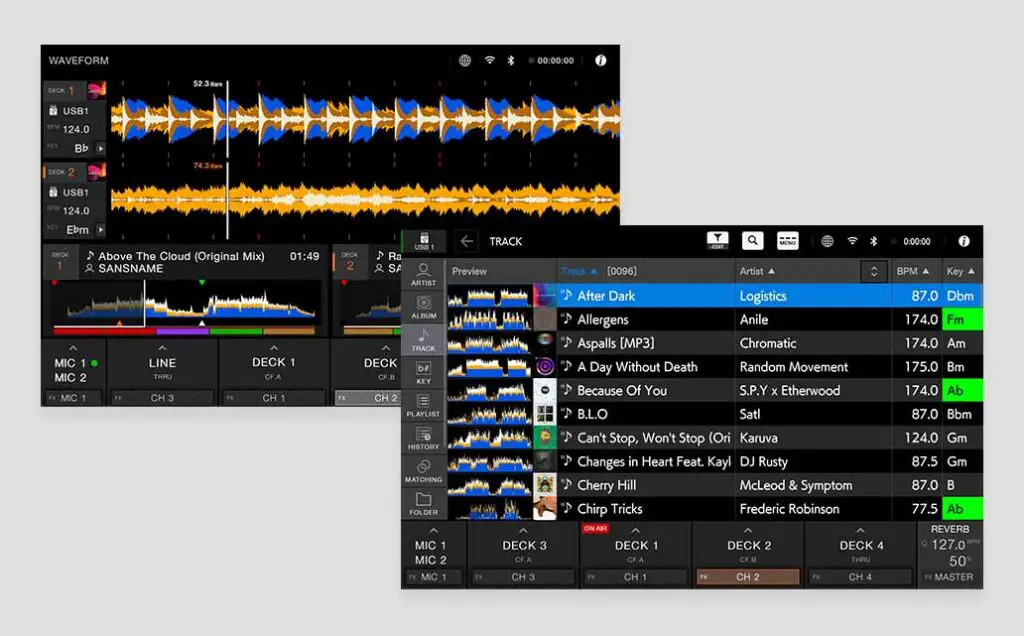
The general experience of using the touch display is in my own experience much better on the OPUS QUAD, simply because of the fact that the unit ditches the old and very much obsolete resistive touch screen technology used on the XDJ-XZ.
This brings in the smartphone-like smoothness and ease of use to the touch surface on the device, which in turn makes the display on the OPUS QUAD better suited for active use, and not just for simple data display and basic setting tweaks.
But that’s not all. The OPUS QUAD also has two additional displays, one over each deck. These displays pretty much are there instead of the jog wheel displays, showing additional waveform view for the loaded tracks, all the crucial track info alongside with some other important data. The two side displays do not have touch support.
No Jog Wheel Displays?
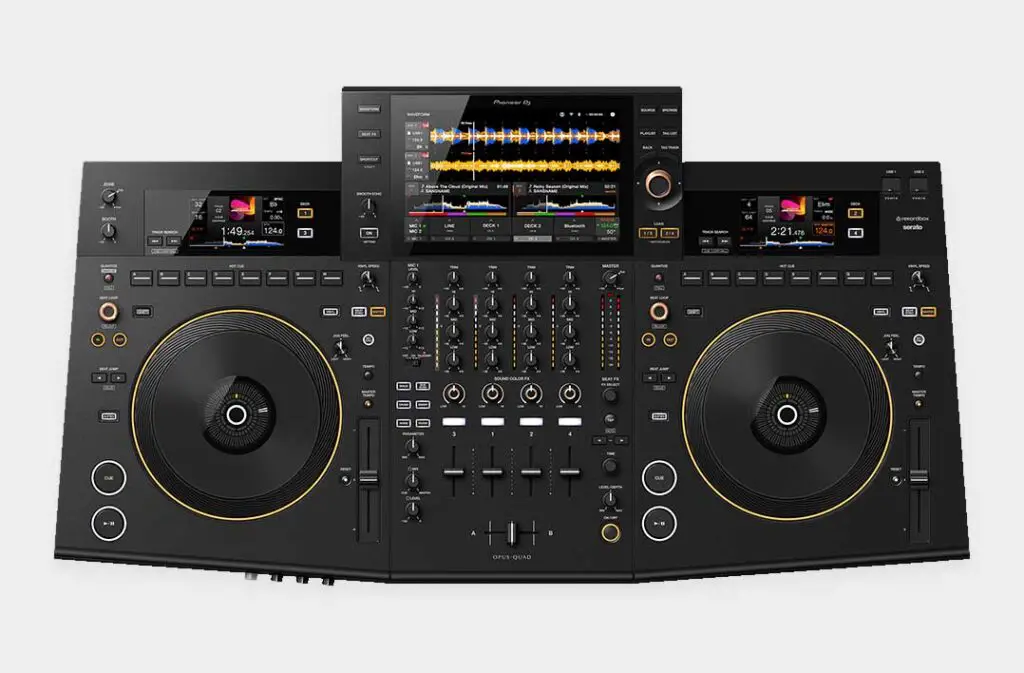
The new sleek design of the OPUS QUAD’s jog wheels doesn’t incorporate color jog wheel displays, as two helper screens on the decks pretty much display all the needed data in a more accurate manner. The device only gives us a digital needle indicator in the middle of each of the jog wheels.
Pioneer XDJ-XZ does have 2 built-in jog wheel screens on which you can display both the most important information about your current loaded tracks and the album artwork associated with the music playing.
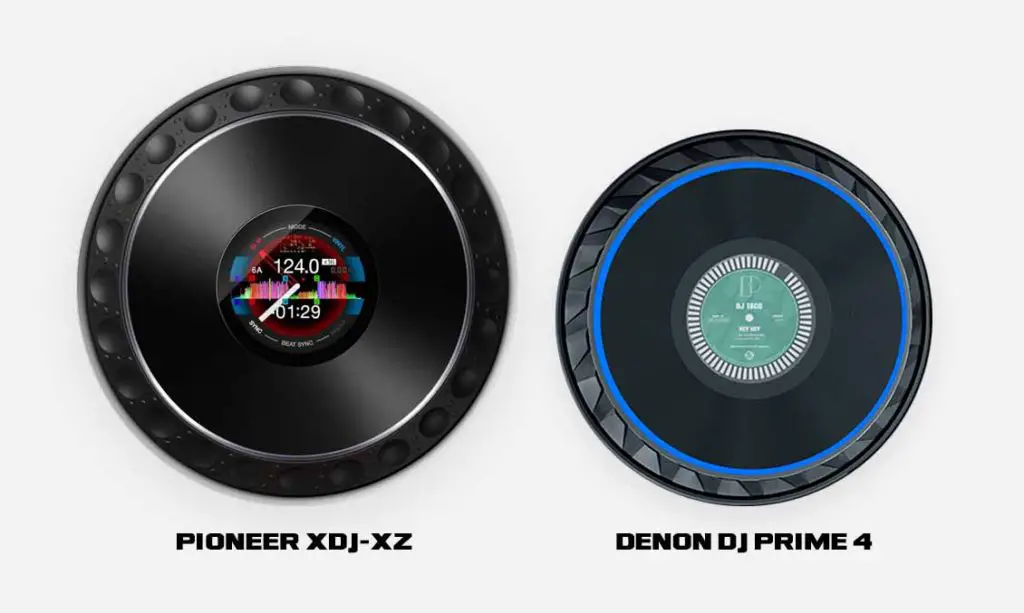
By the way, on many other higher-end Pioneer DJ controllers you can also show your very own customized DJ logo on the jog wheel displays – a feature that is sadly missing from the XDJ-XZ. These controllers include the Pioneer DDJ-1000, or the DDJ-FLX10 (see my comparison of these two here).
Pro DJ Link Support
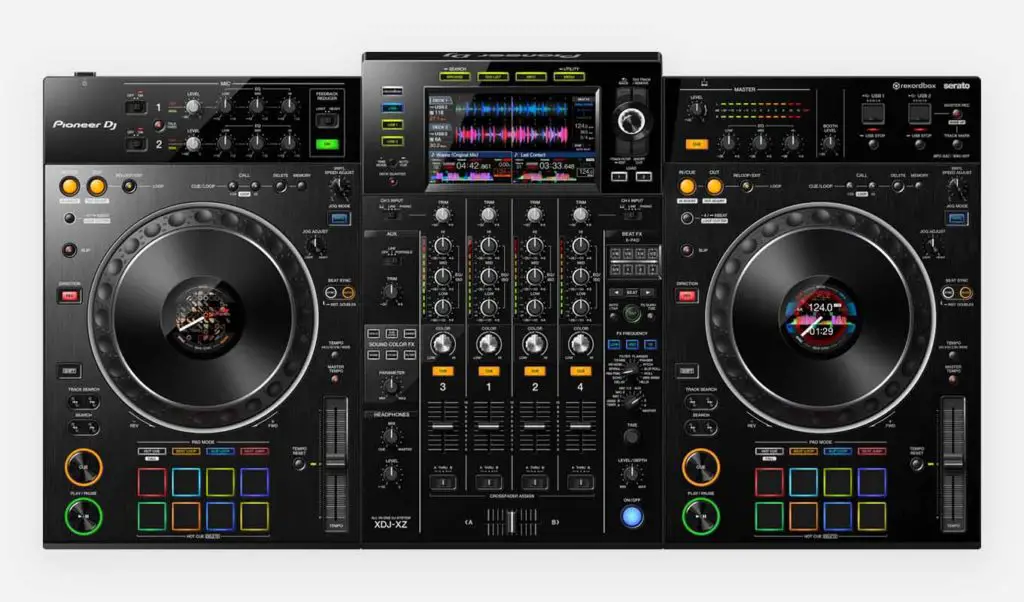
While the OPUS QUAD does not support Pro DJ Link, the Pioneer XDJ-XZ does. If you don’t yet know what it is, it’s basically a feature that gives you the possibility to connect two other Pioneer CDJ devices to your main DJ controller, and use them as additional decks 3 and 4, fully controllable from the device’s main mixer and the main display, with the possibility of library management and song selection from the master device.
This is also, as I’ve already mentioned, the only way to utilize the 3rd and the 4th channel on the XDJ-XZ when it’s used in the standalone mode. The external devices need to be compatible with the Pro DJ Link standard, and connected to the main unit using network cables for this setup to work.
OPUS QUAD does not have appropriate hardware to support the Pro DJ Link technology, and thus the Pioneer XDJ-XZ is a clear winner here.
No Classic Controller-Style Performance Pads
While this can upset many of you, the “classic” performance pads are also gone from the OPUS QUAD, now replaced with a standard hot-cue strip under the side displays akin to the one which you might already know from the main line of the Pioneer DJ CDJ players.
While I do understand the need to make the layout of the device more CDJ-like, in the very end the Pioneer XDJ-XZ (at least in my book) emulates the feel of the club setup much better than the OPUS QUAD, even with the classic performance pads present on the bottom of each deck. I’m still more of a controller guy, so for me the XDJ-XZ has the upper hand here.
Zone Output Access
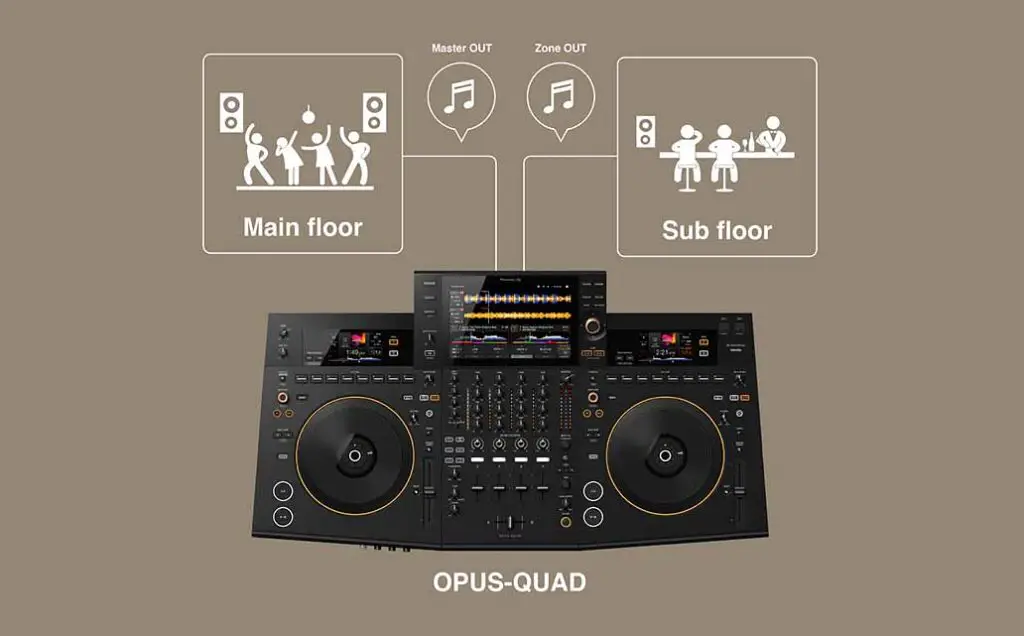
Zone output is a feature that lets you put on a music playlist and play it on a different PA system placed in another room, controlling it from your DJ device alongside your main mix. This is available only on the Pioneer DJ OPUS QUAD, as the XDJ-XZ does not have a zone output on board.
If you’re interested in other devices with this feature, you might want to check out the Denon DJ Prime 4 – which is by the way a much more affordable alternative to both of the controllers I’m covering right now!
Check out some of the best alternatives to the XDJ-XZ and the OPUS QUAD from Denon DJ here: Denon DJ SC Live 4 vs. Prime 4 (Direct Comparison!) (Your wallet will thank you)
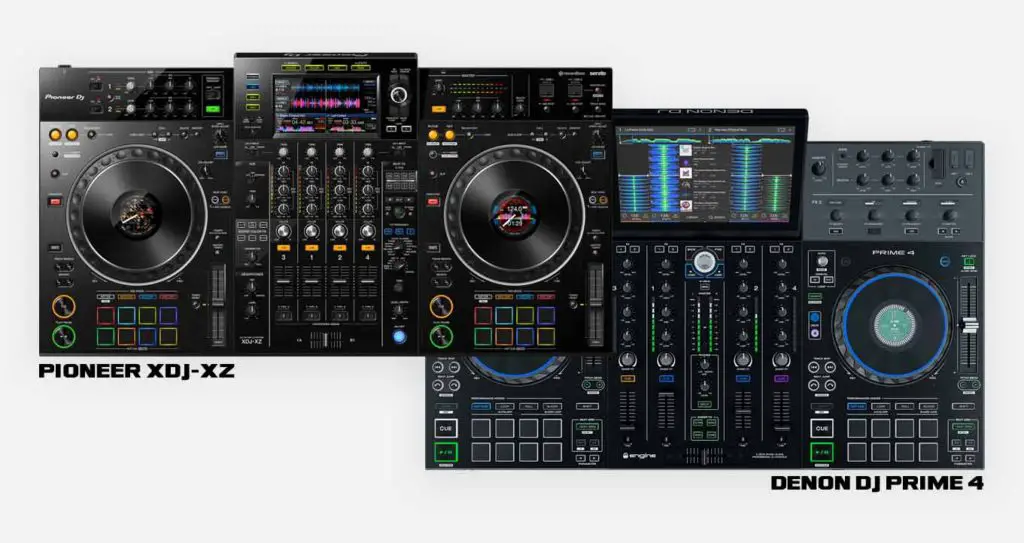
Physical Master EQ and Microphone Controls
The Pioneer XDJ-XZ also has two sets of physical controls I really miss on the OPUS QUAD. One of them is the main master 3-band equalizer allowing you to correct sound coming out of the device, which is a godsend when compensating for the sound system shortcomings in a live situation.
Another one is the neat section for microphone physical input controls on the front panel including 3-band EQ for each of the two mics, and a feedback reducer feature which can come in handy in certain situations (looking at you wedding DJs).
While the OPUS QUAD also does have access to the mic EQ and the feedback reducer, alongside with the master EQ, they are only accessible via the device’s touch screen which I find a little bit less convenient in a live setting.
Software Compatibility
As I’ve already touched upon the topic of the compatible DJ software, it’s also important to point out that the Pioneer XDJ-XZ does support Serato DJ Pro and Rekordbox for wired mixing. Note that before you use any audio files on it in the standalone mode, you have to export them using the Rekordbox software.
The OPUS QUAD also does support both Rekordbox and Serato DJ Pro, and it unlocks both of them when plugged into your computer with the software installed. What is important to mention here, is that the OPUS QUAD can only take in files exported from Rekordbox in the new “Device Library Plus” format, which is different from the Regular library export format for CDJ or XDJ devices, as per the official Pioneer DJ FAQ. You can however freely convert your libraries between these formats, which means that it won’t be an issue for most users.
OPUS QUAD is also said to have support for the Rekordbox DJ performance app in the near future, which will be a nice addition to its already extensive feature set.
Cloud Library Sync And Built-In Wi-Fi
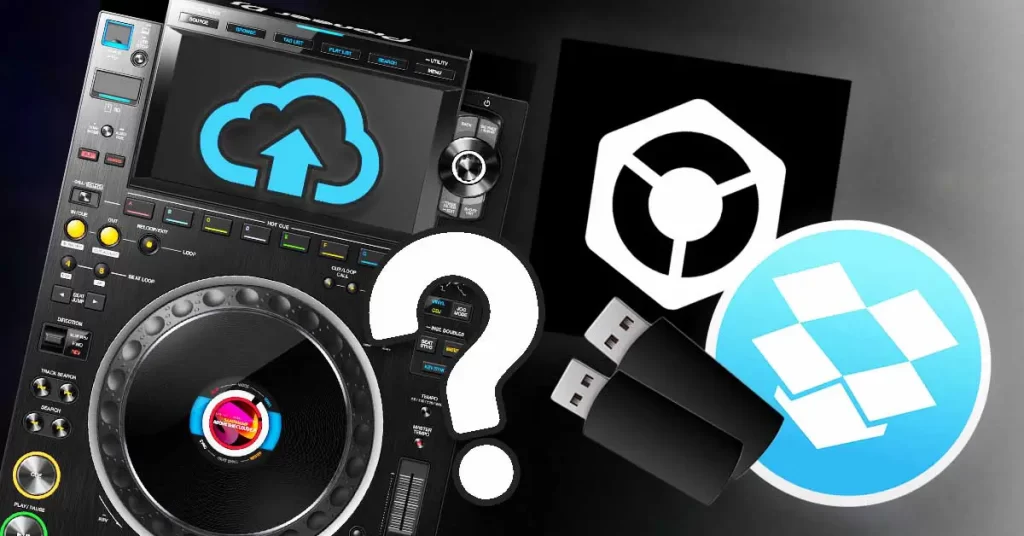
Compared to the XDJ-XZ, the OPUS QUAD does have an in-built Wi-Fi module, which it can use to connect to your home network and stream your tracks directly from your computer, or make use of the cloud library sync feature to stream your music right from your pre-configured synchronized Dropbox account.
Knowing all this, you might be surprised that the OPUS QUAD does not have support for 3rd party music streaming services like many modern DJ controllers in this price range have.
Pros & Cons
Pioneer DJ OPUS QUAD

Pros:
- New redesigned chassis and uncluttered control layout.
- All 4 decks available to load tracks in standalone mode.
- 10.1 inch touch screen with lots of on-screen controls and great responsiveness.
- 2 side displays with additional track info.
Cons:
- The design choices and the similarity to the FLX series might be controversial for some.
- No Pro DJ Link support.
- No support for music streaming services (which is pretty much a must for standalone DJ controllers nowadays).
- The price might be a little bit steep for what you’re getting.
Pioneer XDJ-XZ
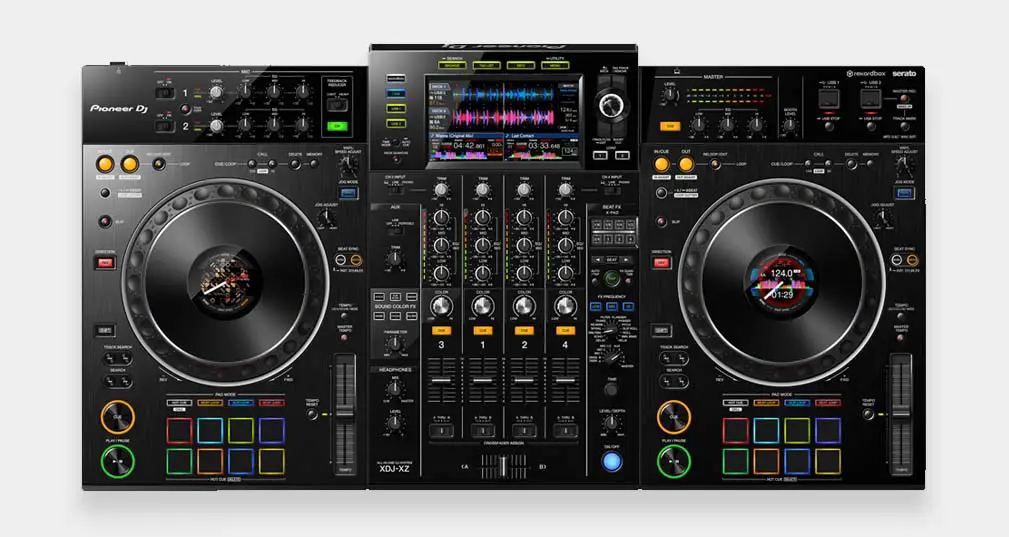
Pros:
- More physical controls including the mentioned mic EQ controls, master equalizer, full set of performance pads, etc.
- Color jog wheel displays.
- Pro DJ Link support with support for external players.
- Better overall feel of a full-fledged CDJ setup (very well might be my personal bias).
- Much more affordable (especially if you’re getting one used).
Cons:
- Smaller, resistive touch screen with limited functionality.
- No Wi-Fi module – so no streaming tracks from your PC or Dropbox.
- Only 2 decks available for track loading in standalone mode.
- No zone output feature present.
So, In The End…

So, the OPUS QUAD is a great device with quite a few new features, giving you a lot of creative freedom in your mixes, but in a way, so is the now dated XDJ-XZ. If you feel like the features that are exclusive to one of the devices are important to you, this should be your main decision factor when making your final choice.
If you are a fan of the previous classic design of the XDJ-XZ chassis, you should really check out some of the used devices over on Ebay, or other second-hand marketplace. The prices may surprise you!
You might also like: Hercules DJControl Inpulse T7 Review – Affordable Motorized Platters?

